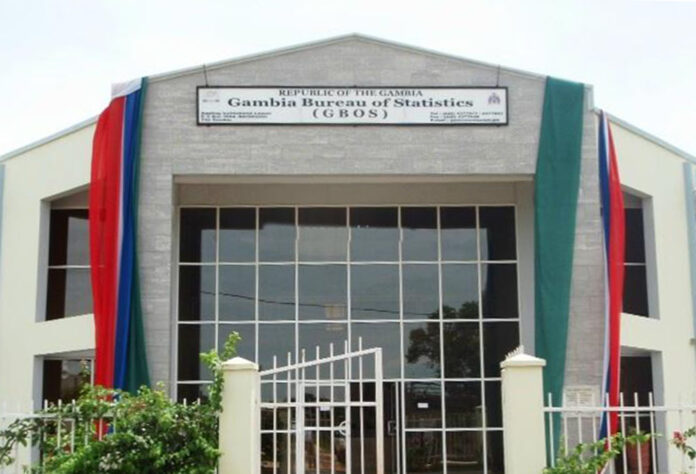By: Seringe ST Touray
The most recent findings presented by The Gambia Bureau of Statistics (GBoS) have revealed the present condition of the workforce in The Gambia. These statistics disclose that the rate of engagement in the labor force stands at 43.6%, while the rate of non-participation amounts to 56.4%.
Regarding the classification of the employment situation among individuals of working age, the research brings attention to the fact that, “On an average basis, 43.6% of people within the working-age range are actively participating in the labor market—either through having a job or experiencing unemployment. The remaining 56.4% constitute the segment of the population that is not actively involved, including students (23.4%), subsistence farmers (9.4%), and individuals facing diverse situations such as the elderly, disabled persons, and discouraged job seekers (23.6%).”
Elaborating on the employment-to-population ratio—a gauge of the proportion of the working-age population that is gainfully employed—the survey expounds, “The employed category includes all individuals of working age who were involved in productive activities during the preceding week, whether compensated monetarily or through profit generation.”
Furthermore, the report states, “The employment-to-population ratio stands at 40.3%, aligning closely with the labor force participation rate since the bulk of the labor force comprises employed individuals. Concurrently, the unemployment rate registers at 7.6%. Unemployed individuals are those of working age who did not work in the week before the interview, actively searched for employment in the past four weeks, and remained available for work during the week of the interview and the following two weeks.”
The survey goes on to highlight disparities in labor force participation rates (LFPR) based on gender and age. LFPR is notably higher among males (47.9%) compared to females (39.6%) across all age brackets. The age-wise analysis reveals that young people tend to enter the labor market later due to prolonged education, with participation peaking during prime years (35-59 years) at around 60% before tapering off at retirement age. Additionally, the LFPR is markedly higher in urban areas (62.6%) compared to rural regions (37.4%), influenced in part by the timing of the survey post-harvesting season.




